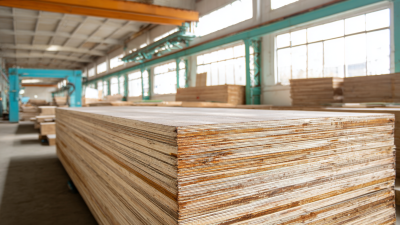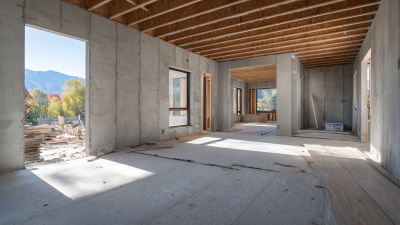In the realm of woodworking and construction, the importance of choosing the right plywood sealer cannot be overstated. A recent industry report from the American Plywood Association indicates that the correct application of sealers can enhance the longevity of plywood by up to 50%, making it crucial for both professional contractors and DIY enthusiasts to understand their options. From weather resistance to moisture control, the properties of various sealers can significantly impact the performance of plywood in diverse environments.
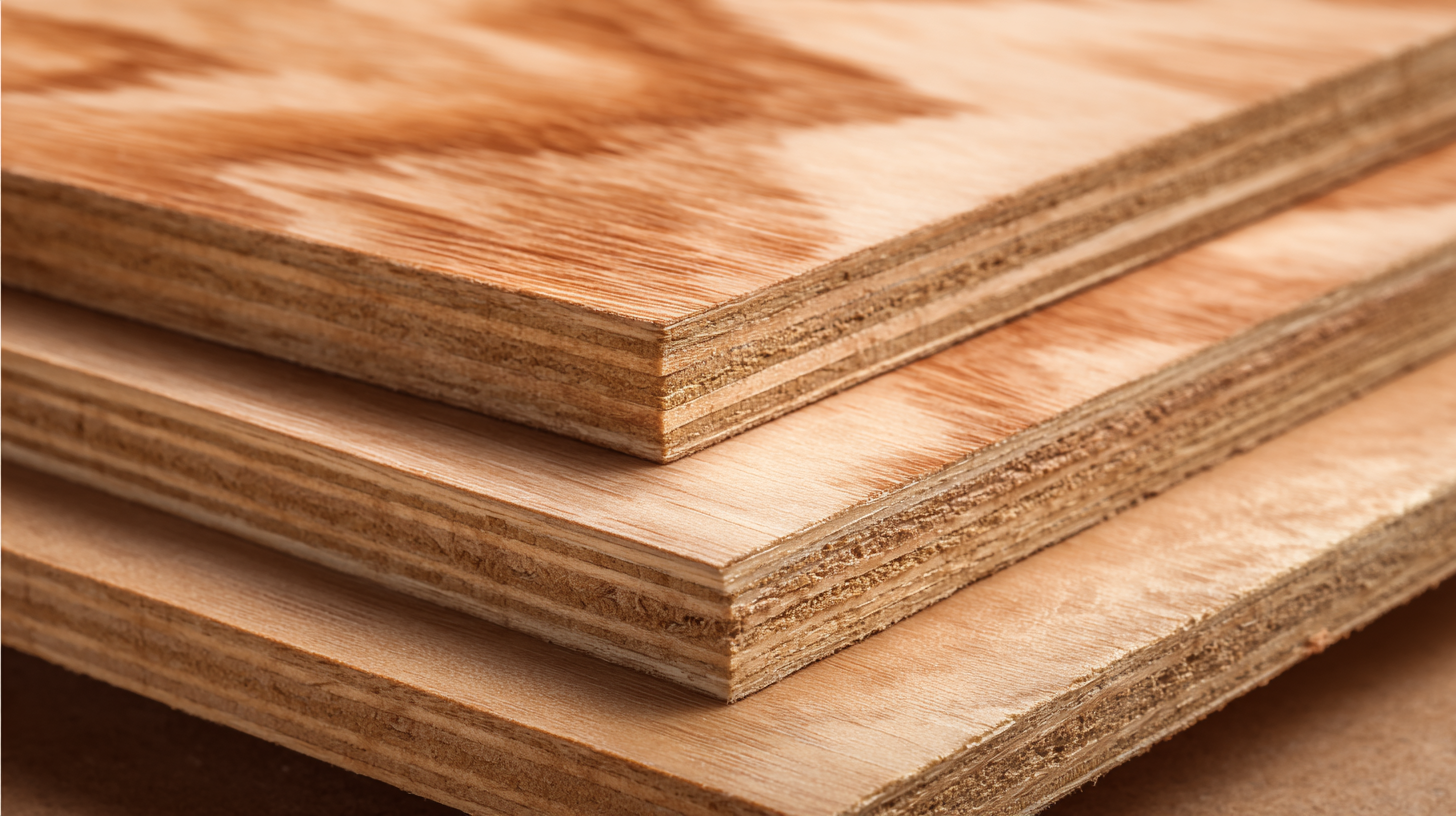
With an increasing emphasis on sustainability and durability in construction practices, understanding the nuances of plywood sealers is essential for ensuring that projects not only meet aesthetic standards but also withstand the test of time. This guide aims to equip readers with the knowledge needed to make informed decisions about plywood sealers, ultimately leading to superior project outcomes.
When selecting a plywood sealer to enhance durability, it's essential to consider several key factors that influence the longevity and performance of the treated wood. One of the most critical aspects is the composition of the sealer. Sealers with low volatile organic compounds (VOCs) not only contribute to a healthier environment but also ensure that the plywood maintains its structural integrity over time. According to recent industry reports, adhesives and sealants with high durability ratings typically feature advanced polymer technologies that provide superior waterproofing and resistance to environmental stressors.
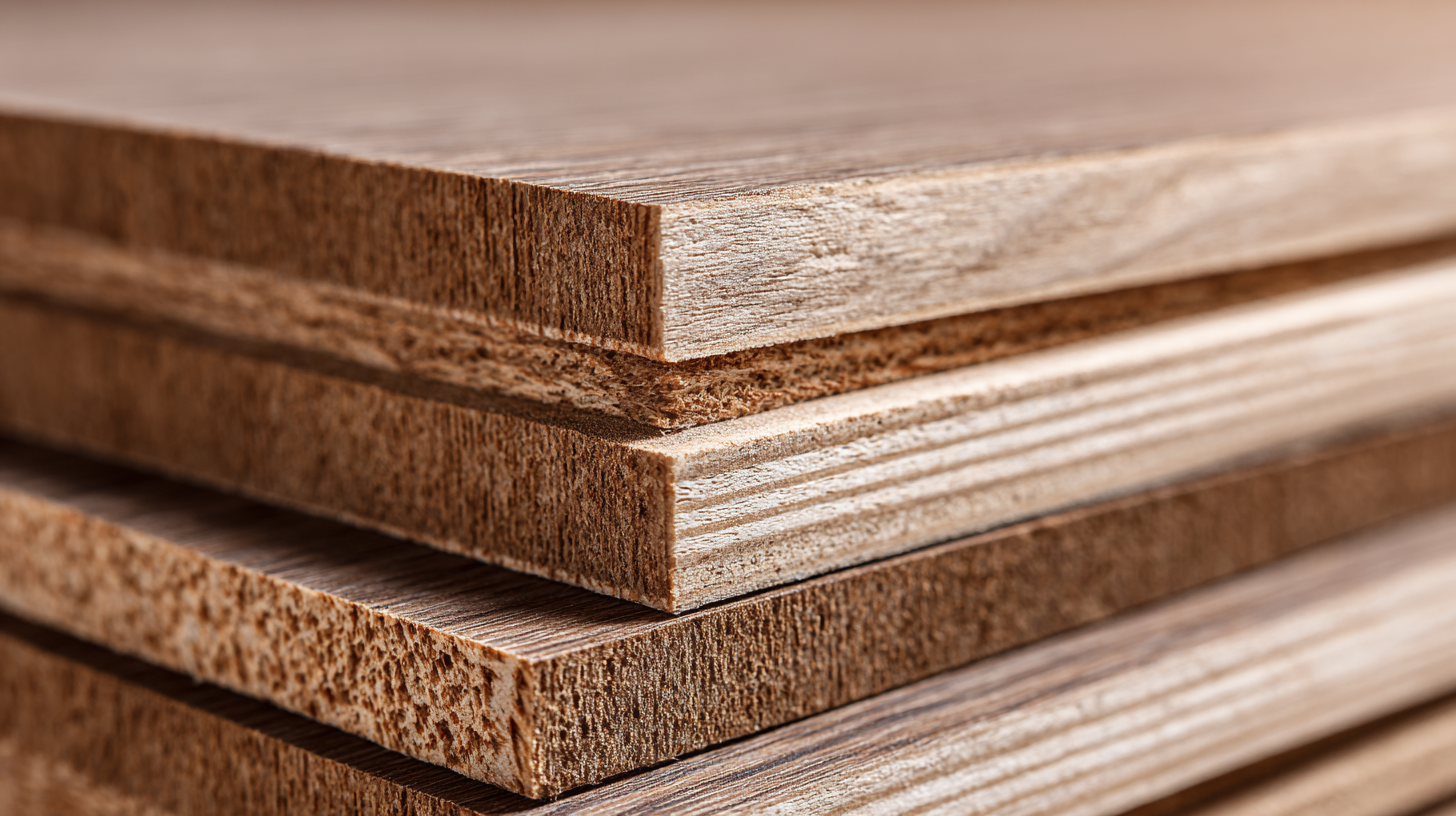
Another factor to consider is the type of finish. Some sealers offer a matte finish for a natural look, while others provide a glossy sheen that enhances appearance and adds an extra layer of protection. For exterior projects, it is advisable to choose a sealer designed specifically for outdoor exposure, which protects against UV rays and the effects of moisture. According to market research, water-based sealers have gained traction due to their ease of application and quick-drying properties, proving to be an ideal choice for those looking to efficiently seal plywood while ensuring long-lasting defense against the elements.
Choosing the right plywood sealer is crucial for enhancing the durability of your woodworking projects. Among the various options available, five types stand out for their specific applications.
First, oil-based sealers are renowned for their deep penetration, which helps to protect against moisture and provides a rich finish suitable for outdoor use. On the other hand, water-based sealers dry quickly and offer low VOC emissions, making them an excellent choice for indoor projects where air quality is a concern.
Polyurethane sealers are particularly popular for high-traffic areas due to their resilience against scratches and stains. In contrast, shellac sealers, while less commonly used, can be effective for interior furniture because they provide a warm tone and fast drying time.
Finally, epoxy sealers are unrivaled when it comes to waterproofing and chemical resistance, often used in environments exposed to harsh elements. According to recent comprehensive tests, sealers can significantly extend the life of plywood products by 30% or more when properly applied, underscoring the importance of selecting the right type for each project.
When it comes to ensuring the longevity and durability of your plywood projects, selecting the right sealer is crucial. Applying plywood sealers effectively can protect against moisture, stains, and wear. According to the Wood Innovation and Design Centre, unsealed plywood can absorb up to 25% more water, compromising its structural integrity over time. Therefore, a high-quality sealer not only prolongs the life of your materials but also enhances the finish and appearance of your projects.
**Tips for Applying Plywood Sealers Effectively:** First, always prepare the surface before application by sanding it to eliminate any rough spots, which can prevent the sealer from adhering properly. A smooth surface allows for better penetration and a more even application. Next, choose the appropriate application method; brushes, rollers, or sprayers each offer unique benefits depending on the project’s size and design intricacies. For instance, a sprayer can provide a fine mist that reaches complicated areas, while a brush offers precision for detailed work.
Additionally, timing is essential. Applying sealers in optimal weather conditions—ideally, between 50°F and 85°F with low humidity—can lead to better curing and adherence. The American Wood Council recommends allowing sufficient drying time between coats; two to three coats can significantly enhance the protective barrier your plywood receives, making it more resilient against the elements.
| Sealer Type | Application Method | Drying Time | Cost per Gallon | Recommended Uses |
|---|---|---|---|---|
| Water-Based Sealer | Brush or Roller | 1-2 hours | $30 | Indoor Furniture, Cabinets |
| Oil-Based Sealer | Brush, Roller, or Spray | 4-8 hours | $40 | Outdoor Projects, Marine Applications |
| Epoxy Sealer | Roller or Trowel | 12-24 hours | $80 | High-Performance Surfaces, Commercial Use |
| Polyurethane Sealer | Spray, Brush, or Roller | 2-4 hours | $50 | Floors, High-Traffic Areas |
| Varnish Sealer | Brush or Spray | 1-3 hours | $35 | Decorative Surfaces, Indoor Use |
When sealing plywood, avoiding common mistakes is crucial for achieving long-lasting results. One frequent error is skipping proper surface preparation. It’s essential to sand the plywood before applying the sealer; this helps to remove any imperfections and allows for better adhesion of the sealing product. Failing to properly clean the surface can also lead to trapping dirt and dust under the sealer, which compromises the finish and diminishes durability.
Another common mistake is using the wrong type of sealer for the intended project. There are various sealers available, each designed for specific conditions, such as interior or exterior use. Selecting a water-based sealer for outdoor projects, for instance, can result in peeling and degradation over time. Additionally, applying too thick a coat can prevent proper curing and lead to a tacky finish. Understanding the properties of the sealer and following the manufacturer's instructions is vital to ensure optimal protection and longevity of your plywood projects.
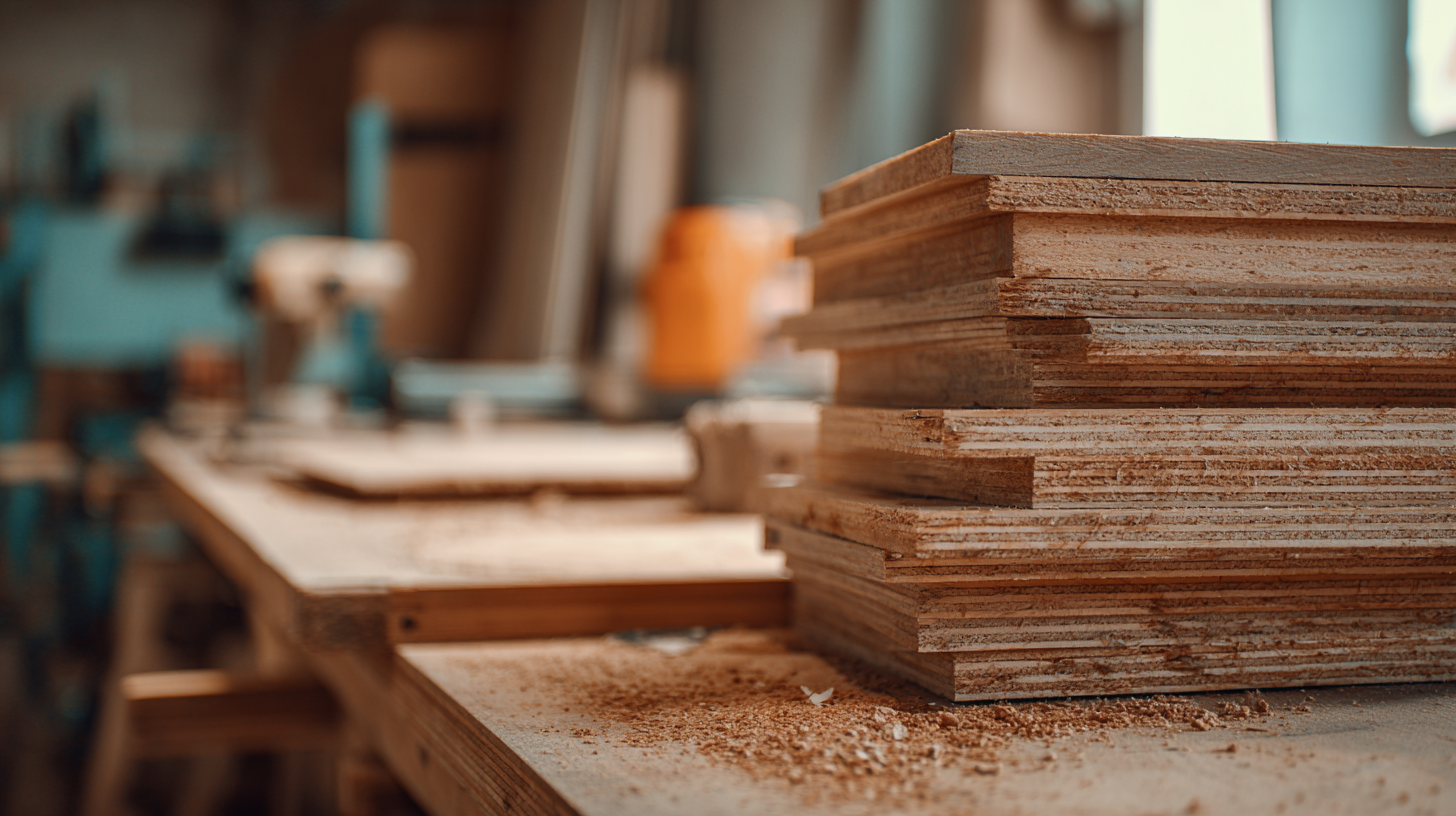
When it comes to maintaining the longevity of sealed plywood, selecting the right sealer is paramount. Studies show that high-quality sealants can reduce moisture absorption by up to 80%, thereby preventing warping and rotting. Additionally, the National Wood Flooring Association indicates that proper sealing procedures can double the lifespan of plywood, especially when exposed to harsh weather conditions.
Regular maintenance also plays a crucial role in extending the life of your sealed plywood. For instance, experts recommend reapplying sealant every one to three years, depending on environmental factors. Testing conducted on various sealants revealed that those with UV protection significantly outperformed others in enhancing durability against sun exposure. Moreover, using a clean, mild detergent for routine cleaning can prevent the buildup of grime and mildew, which not only improves the aesthetic but also the integrity of the seal. By ensuring a proper maintenance routine, DIY enthusiasts can enjoy beautiful and long-lasting plywood installations for years to come.



